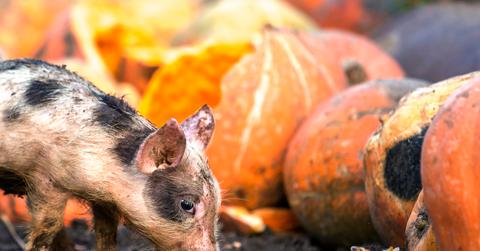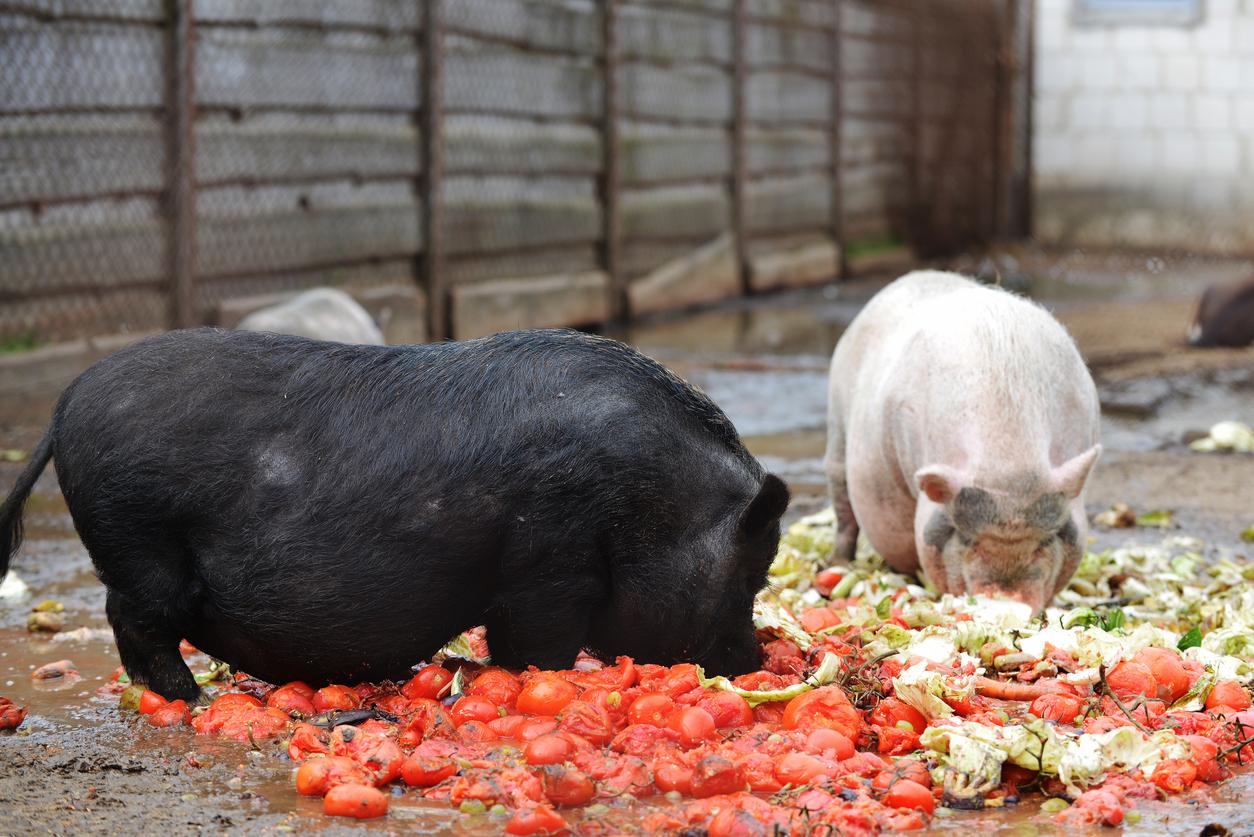What Do Pigs Eat? In the Wild or at a Sanctuary, Their Diets Are Unexpectedly Diverse
Although "eating like a pig" is a common turn of phrase, pig diets might surprise you.
Published July 26 2024, 10:37 a.m. ET

The history of different species of pigs is as varied as the diverse diet they maintain. Micro pigs, or teacup pigs, don't actually exist, and restricting a pig's nutritional needs to keep them tiny is sadly a cruel reality that some pigs face.
And while "eating like a pig" has some merit for pigs whose weight exceeds several hundred pounds, what exactly does a pig eat?
With the sadistic pork industry portraying one image to the public, the micro pig cafe industry portraying another, and rescued pigs at sanctuaries consuming pumpkins by the dozen, what exactly do pigs naturally eat? Plus, when feeding a rescued pig, what should you provide them?

What do pigs eat?
According to World Animal Protection, pigs mirror humans in more than just their intellect and emotional capacity; as it turns out, their nutritional needs similarly vary by stage of life. They enjoy plants, have simple stomachs and identical digestive tracts to ours, and while they try not to overeat, they may very easily store fat.
Overall, pigs eat fruits and roots, flowers and leaves, and nuts and vegetation.
As foragers and omnivores, they are also known to consume fish, dead animals, and insects. Unfortunately, human activity has altered the natural patterns of pig foraging.
Per animalfoodplanet.com, some pig species have adapted to the environment around them and learned to forage nuts and vegetable crops grown by farmers.
Sadly, pig welfare and nutritional needs are never considered on factory farms. Per World Animal Protection, farmed pigs are fed table scraps, "crop residues," food waste, and other environmentally destructive sources of nutrition.
Their diet, which is intended to maximize muscle and fast growth before their untimely death, may tragically be summed up thusly: "corn for energy and soy for protein."
What do I feed pigs?
You may find yourself tasked with the care of a rescued pig, especially if you volunteer at an animal sanctuary. In this case, Best Friends Animal Society recommends feeding potbellied pigs vegetables, nuts and seeds, berries, and a steady stream of earthworms and insects, just as they'd forage in the wild.
Specialty stores also sell dry food pellets formulated specially for pigs, which can help supplement their diet.
As the New Jersey-based farmed animal rescue Uncle Neil's Home often shows, after a long day of rolling through water and playing in the mud, playful pigs work up an appetite. That appetite is often satiated through fresh, nutritious foods like pumpkin puree for younger pigs and apples and bananas for other pigs.
While the pork industry has led many to believe that pigs are naturally obese, that is untrue, and a medically obese pig needs a specialized diet. Per Best Friends Animal Society, a tailored diet for overweight pigs should be made with veterinarian oversight.
While iceberg lettuce won't likely be attractive to rescued pigs fed non-nutritious food for most of their lives, you can try applesauce, pumpkin, or small amounts of other enticing foods to make the lettuce more palatable.
Would pigs eat a human?
A farmed animal, deprived of proper nutrition, natural resources, and basic needs, may behave in unpredictable ways. Pigs could eat a human if hungry enough.
A story in the New York Daily News explained that in 2012, a hog farmer with 700-lb hogs was found dead with body parts scattered throughout the pen, but foul play was not ruled out.
In Romania in 2004, a farmer's wife was found dead after it was suspected she fell into a pig pen, frightening them, and allegedly was eaten.
However, these isolated incidents of obscure nature are aberrations. As Joar Berge (aka @moustache_farmer) shows on his Instagram account for the Lebenshof Odenwald sanctuary, rescued farmed animals love to cuddle, give hugs, play, and show affection.